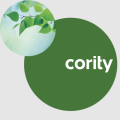Summary
Cut through the green tape
We don't push agendas. At Net Zero Compare, we cut through the hype and fear to deliver the straightforward facts you need for making informed decisions on green products and services. Whether motivated by compliance, customer demands, or a real passion for the environment, you’re welcome here. We provide reliable information—why you seek it is not our concern.
Details
Deep dive
Core Features
Below are key capabilities of the Moata Carbon Portal, each designed to empower project teams with streamlined carbon insights, integrated workflows, and collaborative controls to drive meaningful decarbonization across the infrastructure lifecycle.
PAS 2080‑aligned embodied carbon calculator: A comprehensive, standards-based engine compliant since 2017, enabling PAS 2080 certification and facilitating decision-making at every lifecycle stage, from concept to construction, ensuring consistent, strategic carbon reduction.
Extensive 30,000+ asset and emissions library: Built on both open-source and bespoke regional/sector-specific datasets (water, transport, energy, buildings), empowering users to benchmark and model against real-world materials.
Seamless BIM (Revit, Civil 3D) & BOQ integration: Plug-ins that enable drag-and-drop BIM import and BOQ compatibility, speeding carbon calculations by up to 90% and integrating carbon visibility directly into existing design workflows.
Self‑service onboarding with collaboration controls: Instant access to full portal functionality within days allows non-specialists to start using it quickly. Advanced sharing features offer design privacy settings, ownership transfer, and peer visibility for project-level governance.
Custom emissions factor uploads: Users can supplement or override default datasets with tailored EPDs or regional factors, enabling precise modelling for bespoke materials or local standards and boosting credibility with stakeholders.
API‑powered EPD integrations (e.g., 2050 Materials): Direct access to live Environmental Product Declaration data via API reduces manual updating, ensures up-to-date carbon rates, and enhances visibility into embodied impacts like water usage—enabling more holistic decision-making.
Closing Insights
Recent user feedback from major water utilities highlights significant environmental and cost benefits of the Moata Carbon Portal, with the portal evolving into a true carbon decision‑support tool after its largest update in two years. A review from a placement student at Mott MacDonald also describes using it daily to model carbon emissions for real-world infrastructure. Strategic partnerships are reinforcing its position. A high-profile integration with 2050 Materials through its API enriches the portal’s embodied carbon data, enabling live and automated Environmental Product Declaration (EPD) access. In New Zealand, collaboration with Local Government New Zealand (LGNZ) empowers councils to measure and control infrastructure emissions, showing its growing public‑sector traction. Together, these alliances suggest a future where Moata remains a key tool in sustainable infrastructure design, gaining even more momentum as climate‑aware regulations and client expectations tighten globally.






